ICYMI: Highlights from the week that was April 15 – April 21, 2018
No one can keep up with everything, so let us do it for you. We’ll gather the top Smithsonian stories from across the country and around the world each week so you’ll never be at a loss for conversation around the water cooler.
This week, we saw how African art has been overlooked and co-opted for centuries even as modern collectors snatch up work by suddenly hot African American artists. Plus ça change, plus c’est la même chose.

New museum chief fiercely promotes African art but faces a more prosaic problem at home
The Washington Post, April 16
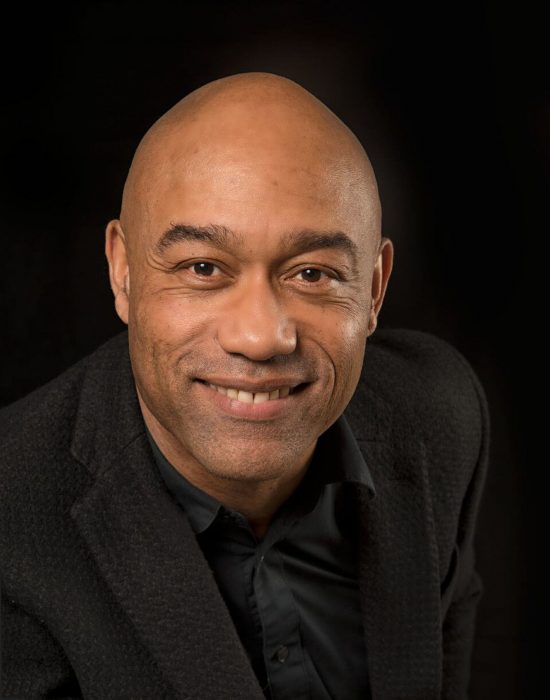
Smithsonian National Museum of African Art Director Augustus (Gus) Casely-Hayford. (Credit — Franko Khoury, EEPA National Museum of African Art)
When he talks about African art, Augustus (Gus) Casely-Hayford radiates like a beam of sunshine.
That’s good because most of the National Museum of African Art he now heads gets little of it. The subterranean architecture is symbolic of the buried treasure that is African art. African culture remains hidden in many ways, and that’s Casely-Hayford’s challenge.
It’s a challenge in more ways than one. African culture too often has been overlooked or denigrated, if not stolen, in a European-centric environment, a subject that incites Casely-Hayford. Repatriating purloined artifacts is a priority for a man who owes fealty to the culture before any institution. Read more from Joe Davidson for The Washington Post.
National Zoo welcomes ‘incredible’ birth of baby gorilla named Moke
The Washington Post, April 17
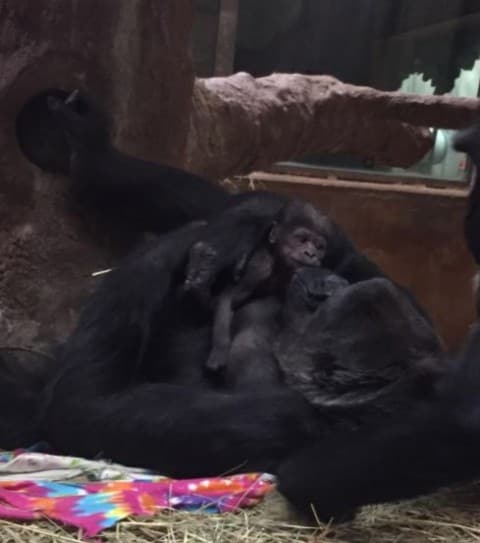
Calaya and her infant in the Great Ape House at the Smithsonian’s National Zoo. (Smithsonian’s National Zoo)
Becky Malinsky was on duty in the National Zoo’s Great Ape House a little after 1 p.m. Sunday when she decided to check on the zoo’s very pregnant western lowland gorilla, Calaya.
Malinsky, the assistant curator of primates, noticed that Calaya looked restless and uncomfortable, and then she saw the animal’s water break. Malinsky got on the phone with her supervisor: “I think this is something,” she said.
For the next five hours, keepers and curators at the zoo watched, and filmed, the 15-year-old gorilla endure labor and then give birth to her first offspring, a male named Moke (pronounced Mo-KEY), which means “junior” or “little one” in the Lingala language of Africa. Read more from Michael E. Riane and Dana Hegpath for The Washington Post.
Warm ocean waters bring an unwelcome resident to the Outer Banks: Bull sharks
The Washington Post, April 16
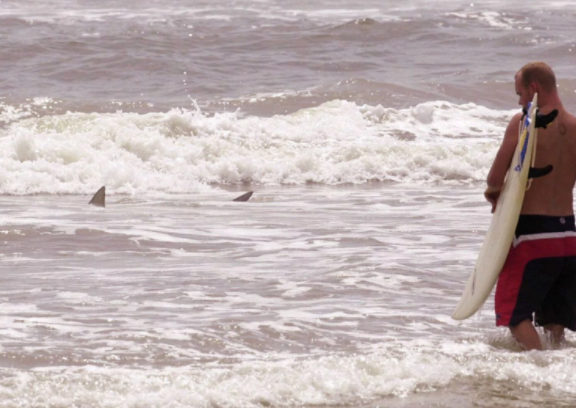
A surfer prepares to enter the Atlantic Ocean in New Smyrna Beach, Fla., as a shark lurks in the surf in August 2001. (Roger Simms/Daytona Beach News-Journal/AP)
There’s a baby boom in the warming waters of North Carolina’s Outer Banks, in the rivers and bays that branch out from the Pamlico Sound. They are tiny. They are cute. They are bull sharks.
Drawn by a temperature rise in coastal waters, a result of climate change, bull sharks that prefer warmth and water with lower salinity levels have taken to mating in the sound near North Carolina’s popular beach haven, and juvenile sharks are showing up where they have rarely been seen before, a new study says. Read more from Darryl Fears for The Washington Post.
Why DC Police Are Studying Critical Race Theory
A mandatory course at the National Museum of African American History and Culture is having some surprising effects.
Washingtonian, April 16
Two to three days a week, Sharita Thompson and Bernie Demczuk explore the entirety of the Smithsonian’s National Museum of African American History and Culture with about 30 DC police officers. The museum lets them in at 6 AM, and they’re usually done at about 3 in the afternoon.
The visit is a new mandatory course for DC’s 3,800 sworn officers, but Demczuk says they’re not trying to teach cops how to do their jobs: “What we said in the very beginning is, we know nothing about policing, but what we’re gonna do is teach you history. That’s what relaxes everybody.” Read more from McKenzie Jean-Philippe and Elliot Williams for Washingtonian.
Wall Street Rush to Scoop Up Black Art Sends Prices Sky High
Bloomberg, April 18
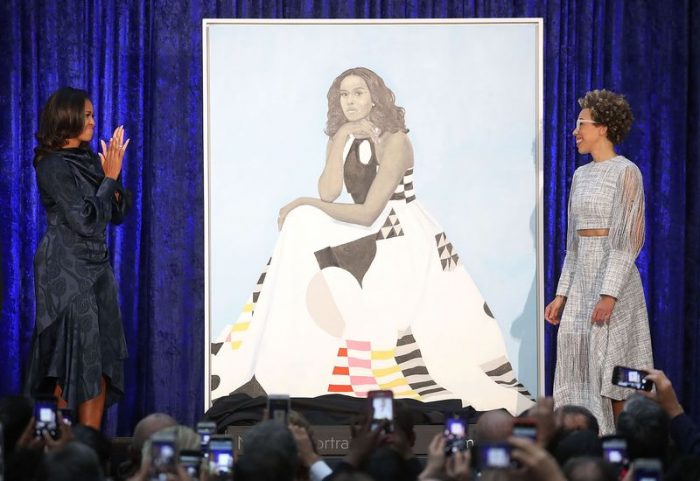
Michelle Obama and artist Amy Sherald unveil Michelle’s portrait.Photographer: Mark Wilson/Getty Images North America
Amy Sherald once waited tables at the Baltimore Museum of Art.
Today she’s a trustee, with collectors and other museums clamoring for her work after unveiling her portrait of Michelle Obama at the National Portrait Gallery earlier this year.
Black artists, long overlooked and undervalued, now occupy one of the hottest corners of the market. Famous buyers have included hedge fund managers Ken Griffin, Steve Cohen and Jim Chanos, major museums, and CNN’s Anderson Cooper.
“It’s such a watershed moment,” said Lisa Melandri, executive director of Contemporary Art Museum St. Louis, which will host Sherald’s first solo museum exhibition next month. “It realigns the canon of art history.” Read more from Katya Azakina for Bloomberg.
U.S. Environmental Group Wins Millions to Develop Methane-Monitoring Satellite
The Environmental Defense Fund is working with researchers at Harvard University on the probe
Scientific America via Nature, April 17

A satellite view of average atmospheric methane levels in January 2016. Darker regions signify higher levels of the potent greenhouse gas. Researchers hope a new satellite could soon track methane emissions with higher spatial and temporal resolution. Credit: NASA; NOAA; EPA; AIRS
A US environmental group has been awarded tens of millions of dollars to develop a new satellite to help track—and ultimately, reduce—emissions of the greenhouse gas methane from oil and gas facilities around the world.
If the Environmental Defense Fund (EDF) succeeds at launching its probe, it could be the first environmental group to send its own satellite into space. The group’s efforts are being funded through the Audacious Project, a joint effort of the non-profit group TED and philanthropic organizations such as the Bill & Melinda Gates Foundation. Read more from Jeff Tollefson for Nature.
Metropolitan Museum Aims for Accessibility with Sign Language Tours on Facebook Live
52,000 people tuned in to watch the museum’s first Facebook Live ASL tour, which showcased the “Rodin at the Met” exhibition
Hyperallergic, April 18
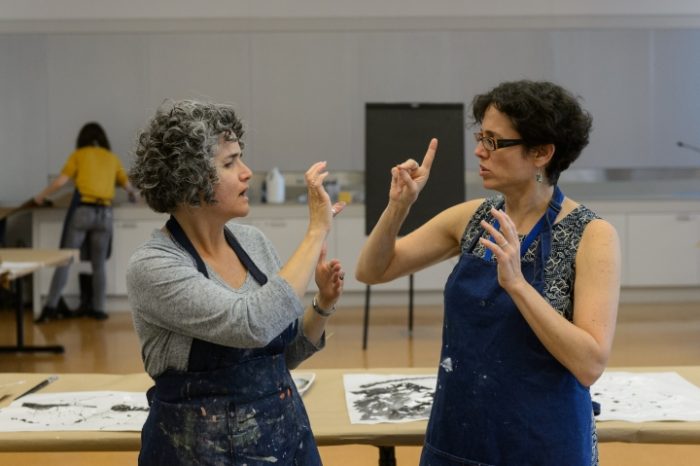
Met Signs in the Studio in ASL (photo by Filip Wolak, courtesy Metropolitan Museum of Art)
In the past couple of years, the Metropolitan Museum of Art has made an effort to reach new audiences on the internet. In February 2017, the museum launched its Open Access initiative, making hundreds of thousands of high-resolution images of works in its collections available for free and unrestricted use online. Last fall, the Met’s Access and Community Programs Education Department tapped into social media, presenting its first American Sign Language (ASL) tour on Facebook Live.
Emmanuel von Schack, an art historian and lecturer who gave a Facebook Live ASL tour of the Rodin at the Met exhibition, told Hyperallergic in an email that he was excited about the project for two reasons. First, “it is a tour that anyone in the world with a Facebook account can watch live or afterwards.” And second, “it increases visibility of and awareness about American Sign Language, Deaf identity, and the Met’s commitment to accessibility and inclusion.” Read more from Elena Goukassian for Hyperallergic.
Are these the most beautiful textiles in the world? (Review)
The Washington Post, April 19
There’s a famous line in Rob Reiner’s coming-of-age movie “Stand by Me.” It’s delivered with a slight lisp by a chubby little boy called Verne: “If I could only eat one food for the rest of my life, that’s easy. Pez. Cherry flavor Pez. No question about it.”
Verne, in the movie, looks like a bit of a gourmand. He’s familiar with many different kinds of food.
I, too, as an art critic, have seen a lot of different kinds of art. But, I swear: If I could see only one kind of art for the rest of my life, it’s easy. Textiles. Uzbekistani textiles. No question about it. Read more from Sebastian Smee for The Washington Post.
A guy in Minnesota is the museum world’s answer to old technology
The Washington Post, April 20
The Hirshhorn Museum’s current exhibition on ’80s pop art raises serious questions about consumerism, marketing and the artist as a brand, but it also spotlights a less cerebral issue facing many museums today. Where do they get all those old video monitors, and how come they still work?
It’s simple: The Hirshhorn has a guy.
Kurt Sadler is the museum world’s secret weapon, an old-tech guru who operates out of a warehouse in the suburbs of Minnesota’s Twin Cities. He sells and services the retro monitors that are critical for exhibitions such as the Hirshhorn’s “Brand New: Art and Commodity in the 1980s,” a multi-artist, multimedia examination of a decade that features many time-based works — video, film, slide and computer-generated imagery. Read more from Peggy McGlone for The Washington Post.
Bring on museum companion apps — but only if they’re absolutely awesome
Mashable, April 20
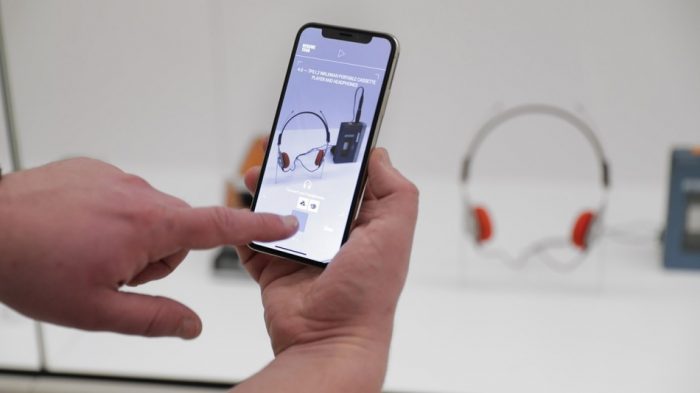
Art-scanning apps for museums have a lot of potential. But there are pitfalls. Image courtesy of R/GA
On a weekday afternoon in the Greek and Roman sculpture hall at The Metropolitan Museum of Art, I was, to my surprise, the only visitor on my phone.
The long gallery was fairly empty, but it was oddly devoid of the usual selfie-takers and Instagram story posters. I, on the other hand, had my phone out because I was attempting to use an app called Smartify to scan “Marble statue of a kouros (youth),” in order to learn more about the sculpture. It wasn’t going well. Read more from Rachel Kraus for Mashable.
Posted: 30 April 2018





